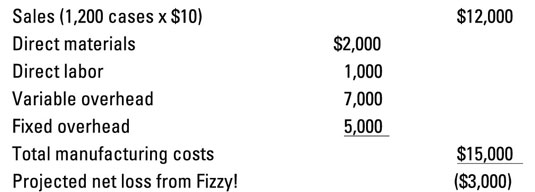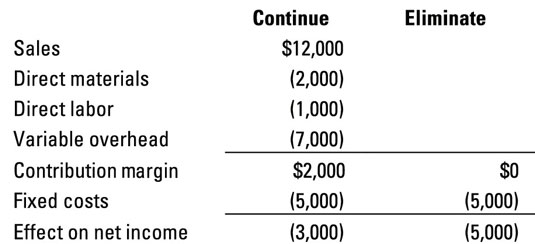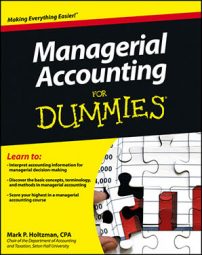Managers sometimes must decide whether to eliminate certain products or even a segment of their operations. For example, Keebler discontinued Hydrox Cookies a few years ago, ending the Oreo versus Hydrox debate once and for all.
A decision to discontinue a product line or segment requires you to consider how your decision affects both revenues and expenses. Focus on revenues that will change as a result of your decision and on incremental costs. Then choose the option that is more profitable (or perhaps just less unprofitable).
If you want to find out what will happen if you eliminate a particular product, compare two contribution margin income statements: one that assumes that you continue with the product and one that assumes you drop it.
The Great Soda Corp. is thinking about discontinuing a soft drink line called Fizzy!. The company expects to be able to sell just 1,200 cases of Fizzy! this year, at a price of $10 per case. The cost of making Fizzy! is shown here. Note that fixed costs here are unavoidable. If The Great Soda Corp. stops making Fizzy!, that line’s fixed costs will get allocated to other products the company makes.

The following figure provides the contribution margin income statement analysis for The Great Soda Corp.’s Fizzy! dilemma. If the company continues with Fizzy!, the numbers keep going as projected. However, if it drops Fizzy!, all costs except fixed costs go away.

When it comes to profitability, it turns out Fizzy! is a no-win situation. Continuing to make Fizzy! means The Great Soda Corp. loses $3,000. However, eliminating Fizzy! causes the company to lose $5,000.
Therefore, The Great Soda Corp. isn’t in a situation where it can maximize profits; instead, it has to minimize its losses. Eliminating Fizzy! increases losses by $2,000, so the smart decision is for The Great Soda Corp. to keep making Fizzy!. (Fizzy! fans, rejoice!)
Now set aside talk of profitability and focus on contribution margin, which addresses this dilemma quite nicely. Making Fizzy! provides a positive contribution margin of $2,000 — so the company should continue to make it and keep the contribution margin flowing.
As with all decisions, consider qualitative factors. Eliminating an unprofitable brand may alienate customers or reduce demand for complementary products.

